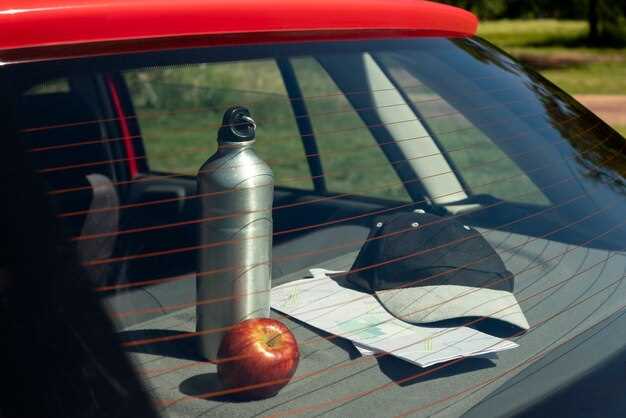
Windshield repair is essential for maintaining the structural integrity of a vehicle and ensuring driver safety. However, despite advancements in technology and repair techniques, not all windshield repairs are successful. Understanding the common reasons behind these failures can help vehicle owners make informed decisions when it comes to maintenance and repairs.
One major factor contributing to unsuccessful repairs is the size and location of the damage. Small chips and cracks can often be repaired effectively, but larger damage or cracks that extend to the edges of the windshield may compromise the entire glass. Additionally, any repair that occurs too close to the driver’s line of sight may be considered unsafe, leading to the recommendation for glass replacement instead of repair.
Another significant reason for repair failure is poor repair techniques. Not all repair professionals use the same methods or quality of materials. Inexperienced technicians may fail to adequately clean the area surrounding the damage or may use subpar resin that does not adhere well to the glass. This can lead to incomplete repairs and the reemergence of cracks or chips.
Environmental factors also play a crucial role in the success of windshield repairs. Temperature and humidity can affect the curing process of repair resins. Applying repair materials in extreme temperatures or high humidity can prevent the resin from setting properly, ultimately resulting in a botched repair. Understanding these variables can help vehicle owners seek repairs under optimal conditions.
By recognizing these common pitfalls, vehicle owners can take proactive steps to ensure better outcomes for windshield repairs. Addressing damage promptly, choosing experienced professionals, and considering environmental conditions can significantly increase the chances of a successful repair.
Improper Assessment of Damage Severity

One of the most critical factors influencing the success of windshield repair is the accurate evaluation of the damage’s severity. When technicians misjudge the extent of the damage, it can lead to ineffective repairs or even the necessity for a full windshield replacement.
The impact of damage severity is paramount. If a chip or crack is deemed minor yet is deeper than it appears, the resin used in the repair may not bond effectively, resulting in a compromised windshield. Conversely, if a technician underestimates a significant crack as superficial, it can propagate further, posing safety risks and ultimately leading to more expensive repairs.
Additionally, environmental factors play a role in assessing damage severity. For instance, temperature fluctuations can cause cracks to expand or contract, altering their initial appearance. A thorough assessment must take these factors into account, ensuring that the repair process aligns with the true condition of the windshield.
Training and experience are vital in determining damage severity. Technicians must be well-versed in various types of windshield damage, from star-shaped chips to lengthy cracks. Proper training allows professionals to identify potential weaknesses that may not be immediately visible, ensuring that repairs are thorough and effective.
In summary, improper assessment of damage severity can lead to inadequate repairs, safety hazards, and increased costs. Ensuring thorough evaluations by knowledgeable technicians is essential for successful windshield repair outcomes.
Use of Substandard Repair Materials

The quality of materials used in windshield repair plays a crucial role in determining the effectiveness and longevity of the repair. Substandard repair materials can significantly hinder the success of the process, leading to further damage and diminished visibility for the driver. One common issue is the use of low-grade resin, which may not adhere properly to the glass or fail to fill cracks adequately. This can cause the repair to crack or separate over time, resulting in the original damage reappearing or worsening.
Additionally, inferior quality materials may lack the necessary clarity, leading to optical distortion that compromises visibility. This is particularly dangerous as it can affect the driver’s perception of the road and surroundings, increasing the risk of accidents. Furthermore, substandard sealants and adhesives can result in leaks or moisture buildup, which can lead to corrosion or mold growth within the vehicle. Over time, these problems can escalate, necessitating a full windshield replacement rather than a simple repair.
It’s essential for vehicle owners to verify that repair technicians are using high-quality materials that meet industry standards. Investing in reputable products not only ensures a more reliable repair but also enhances safety on the road. Opting for technicians who prioritize quality can ultimately save time and money by preventing the need for future repairs and replacements.
Inadequate Weather Conditions During Repair
Weather conditions play a crucial role in the success of windshield repair. Temperature, humidity, and precipitation can significantly impact the curing process of the adhesive used in repairs. For instance, extremely low temperatures can cause the adhesive to cure improperly, leading to weak bonds and a higher likelihood of failure. Similarly, high humidity levels can interfere with the adhesive’s ability to adhere effectively to the glass and the frame of the vehicle.
Rain or moisture on the windshield during the repair process can compromise the bonding agent, reducing its effectiveness. Ideally, repairs should be conducted in dry conditions, with temperatures between 50°F and 80°F (10°C to 27°C) for optimal results. If the weather does not permit these conditions, repair technicians may advise postponing the work until the environment is more suitable.
Additionally, direct sunlight can cause the adhesive to cure too quickly, preventing it from fully penetrating the cracks or chips. This rapid curing process can lead to incomplete repairs and the potential for air or moisture to enter the damaged area. Technicians often seek shaded locations or use special tarps to mitigate the effects of direct sunlight during repairs.
In summary, inadequate weather conditions can severely compromise the integrity of a windshield repair. Ensuring that repairs are conducted in optimal environmental conditions is essential for achieving durable and reliable results.

